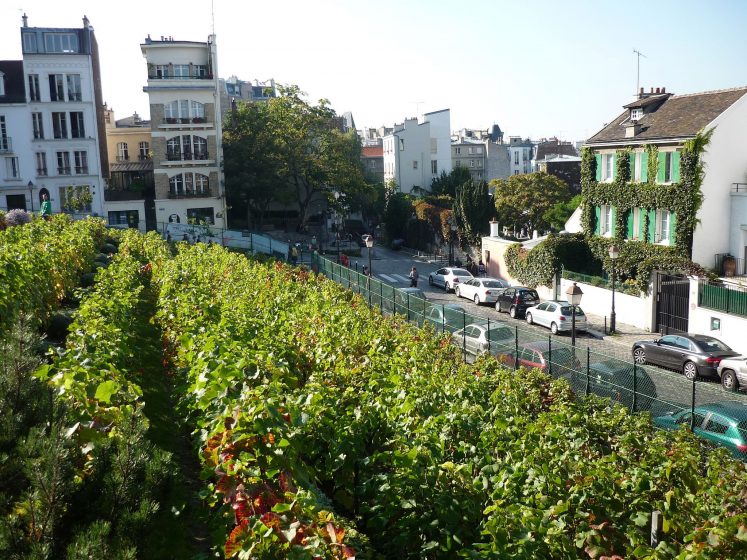Some Known Questions About City Blooming.
City Blooming Fundamentals Explained
Table of ContentsNot known Details About City Blooming Excitement About City BloomingCity Blooming for BeginnersWhat Does City Blooming Mean?8 Simple Techniques For City Blooming
Fascinated in growing food up for sale in the City of Chicago? Considering starting an area garden? Modifications to the Chicago Zoning Regulation allow farming uses like neighborhood yards and city ranches in many components of the city. Below is a checklist of regularly asked questions pertaining to the regulations and guidelines that growers must take into consideration when preparing a city agriculture project.
The zoning change does not modify any kind of other codes handling composting, structure permits, buying or renting City had building, organization licenses or ecological contamination. There are existing codes that control these issues and they remain in full impact and may apply to your task. Neighborhood gardens are typically had or managed by public entities, civic organizations or community-based companies and preserved by volunteers.
Urban farms expand food that is meant to be marketed, either on a not-for-profit or for-profit basis. As a result of their industrial function, urban farms need an organization certificate. Yes. An area yard is enabled to market excess produce that was expanded on website if the sales are accessory or subservient to the garden's key function explained above.
Some Of City Blooming
The amount of garden compost product can not go beyond 25 cubic yards at any type of given time according to the requirements in 7-28-715 of the City's Municipal Code. Due to the fact that the dirt at many new garden websites requires modifying, garden compost, dirt, timber chips, or other products can be gotten to construct or boost the expanding space.

If a structure license is needed then the hoophouse will be thought about an accessory building. You can learn more concerning the building permit requirements by contacting the Division of Structures. The 25,000-square-foot dimension limit is meant to avoid a solitary area yard from dominating a provided block or detracting from the block's existing household or commercial personality.
The restriction does not apply to yards located in Public Open Room (POS) areas. Can there be even more than one area garden that is 25,000 square feet on a solitary block? Fence is not required, however, gardens that have huge auto parking locations may be required to set up fence or other landscape design attributes.
The Best Strategy To Use For City Blooming
B1 & B2 areas call for that all business use tasks be performed inside your home. R districts restrict business activity. The guidelines mirror the objective and intent of the Zoning Code. Is fence needed for metropolitan ranches? Yes. Fences may be called for, along with landscape design and testing, for sure parking lot and exterior job or storage space areas depending upon area and the specific activity taking place.
Yes. Urban ranches call for building permits and zoning authorizations before building. Other kinds of city testimonial might be needed depending on certain frameworks, activities, size, landscape design, licensing, public health and stormwater administration issues. Much of these demands are determined in the task design or permitting process, nonetheless, the candidate might be responsible to separately recognize details licenses or allows that might be required.
Yes. The sort of license is identified by what is happening at the site. The Division of Service Matters and Consumer Defense can assist determine the particular sort of business permit that's required. Yes. Off road vehicle parking is needed for many business projects in Chicago. The needed variety of garage is based upon the variety of staff members dealing with site and not the square footage of the expanding area.
The 30-Second Trick For City Blooming

Yes. A metropolitan farm can offer compost material generated on website, nonetheless, the procedure should abide by the regulations in 7-28-715 of the Chicago Municipal Code. Yes. Aquaponic systems are enabled indoors on city farms in numerous zoning districts. A zoning testimonial and building authorization is called for in order to mount frameworks or systems and an organization certificate is needed as explained over.
Approximately five hives or colonies of honey may be maintained as an accessory use. Nevertheless, beekeepers should sign up with the Illinois Division of Agriculture. For more details concerning the recommended zoning amendment you might contact the Division of Housing and Economic Development, Bureau of Planning and Zoning at 312.744.8563.
Farming in cities and urban areas A city ranch in Chicago. Urban farming describes various practices of growing. https://www.intensedebate.com/people/cityblooming1, handling, and distributing food in metropolitan locations. The term likewise puts on the area tasks of pet husbandry, tank farming, beekeeping, and cultivation in a city context. Urban agriculture is distinguished from peri-urban farming, which happens in backwoods beside residential areas.
What Does City Blooming Do?
It can include a motion of organic growers, "foodies" and "locavores", that look for to form social networks based on More Help a shared values of nature and area holism. These networks can create by means of formal institutional assistance, becoming integrated right into neighborhood town as a "transition community" activity for sustainable city development.
In either instance, the extra direct accessibility to fresh vegetable, fruit, and meat items that might be realised through urban agriculture can boost food safety and food safety and security while reducing food miles, leading to reduced greenhouse gas exhausts, thus contributing to environment change mitigation. A few of the first proof of urban agriculture originates from Mesopotamia.